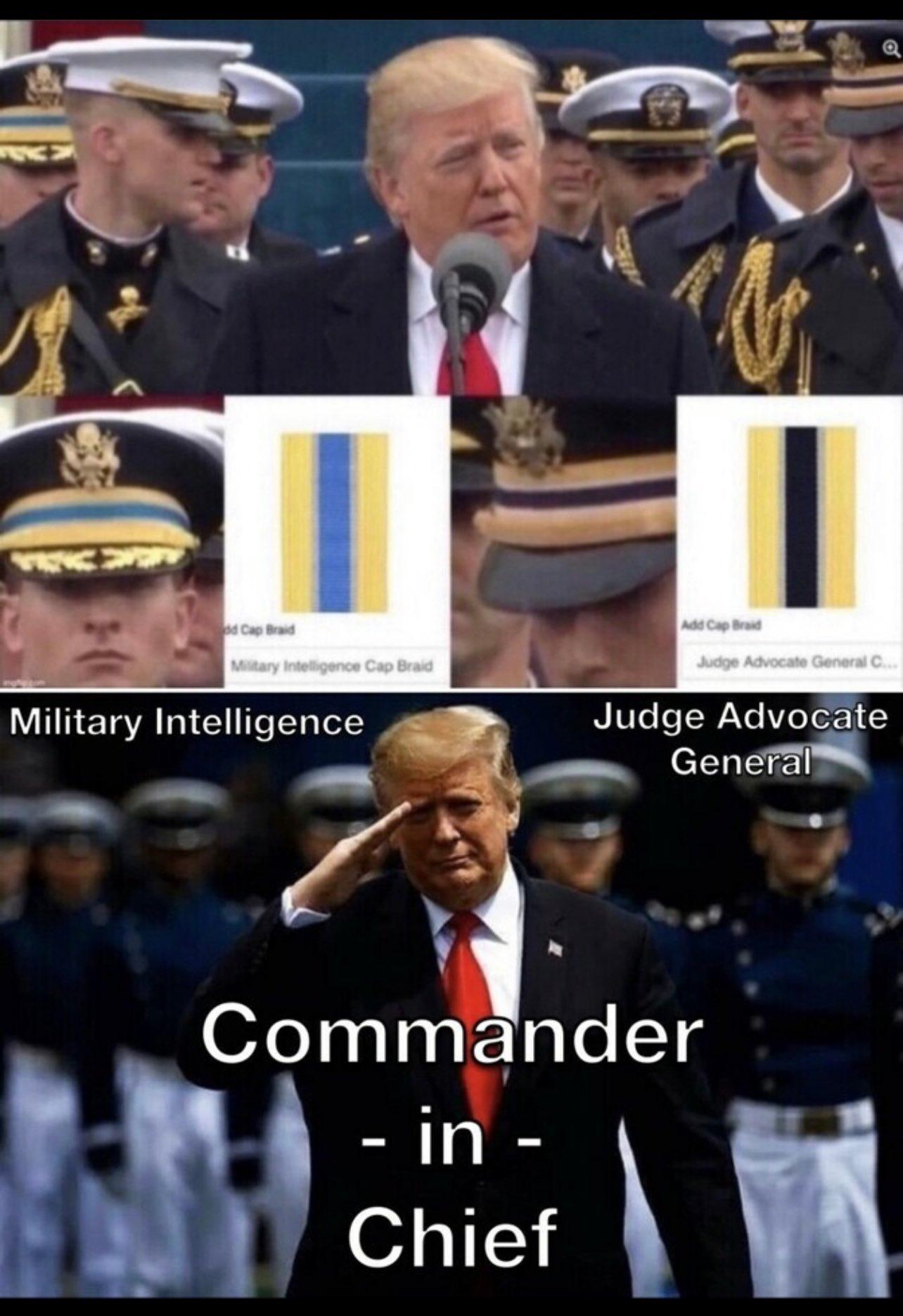
I know many of you have seen the video and picture , but many have not...
Show me any other President in US history to have the military with them while they do their inauguration speech...
Special note, who was standing by Trump specifically?..
Why is this important?.
(media.greatawakening.win)
DJT, Military Intel, & JAG

Military Intelligence Groups (MIGs), also known as Military Intelligence Brigades or Military Intelligence Battalions, are specialized units within the military that focus on gathering, analyzing, and disseminating intelligence information to support military operations and decision-making. The specific roles and functions of these groups can vary depending on the country and the military branch they belong to, but generally, they perform the following tasks:
Intelligence Collection: MIGs gather information from various sources, including open-source materials, signals intelligence (SIGINT), human intelligence (HUMINT), imagery intelligence (IMINT), and more. This information is collected to provide a comprehensive understanding of the operational environment, potential threats, and opportunities.
Analysis and Assessment: Intelligence analysts within MIGs evaluate the collected information to produce intelligence reports and assessments. They analyze data to identify patterns, trends, potential threats, and actionable insights for military commanders and decision-makers.
Counterintelligence: MIGs also focus on counterintelligence activities, which involve identifying and countering espionage, sabotage, and other activities conducted by foreign intelligence agencies or hostile entities.
Strategic and Tactical Support: The intelligence gathered and analyzed by MIGs is used to support both strategic and tactical military operations. Strategic intelligence helps military leaders make informed decisions about long-term planning, while tactical intelligence supports real-time or near-real-time operations on the battlefield.
Force Protection: MIGs contribute to force protection by providing information about potential threats to military personnel and assets. This information helps in enhancing situational awareness and implementing appropriate security measures.
Threat Assessment: MIGs assess potential threats from adversarial nations, terrorist organizations, insurgent groups, and other entities that could pose risks to national security or military operations.
Cyber Intelligence: With the growing importance of cyber warfare, some MIGs also focus on gathering and analyzing intelligence related to cyber threats and vulnerabilities.
Support to Special Operations: MIGs often provide intelligence support to special operations forces, helping them plan and execute covert and unconventional operations.
Collaboration: MIGs collaborate with other intelligence agencies, military branches, and allied nations to share intelligence, enhance coordination, and achieve common goals.
Training and Education: MIGs provide training and education to military personnel on intelligence-related topics, including how to gather information, analyze data, and protect sensitive information.
In summary, Military Intelligence Groups play a critical role in providing timely, accurate, and relevant intelligence to military commanders and decision-makers, enabling them to make informed choices and effectively respond to threats and challenges.